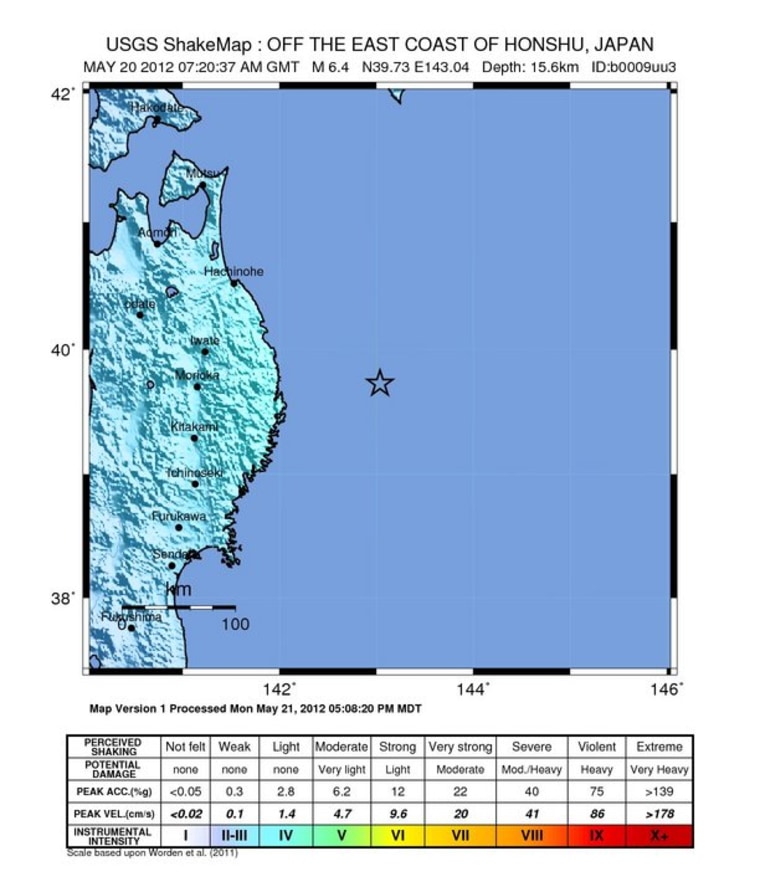An earthquake that ruptured this week off the coast of Japan was the largest recent aftershock to affect an area that, more than a year after one of the most powerful earthquakes on record, is still experiencing a steady stream of seismic jolts.
So far, 5,229 aftershocks have rattled the tectonic boundary that ruptured off the coast of Japan's Tohoku region in March 2011. The magnitude-9.0 earthquake was the fifth-largest earthquake ever recorded.
The Sunday quake was listed as both magnitude-6.0 and -6.4. The United States Geological Survey has now confirmed that it was a magnitude-6.4 earthquake, making it the largest aftershock since March 14, when a magnitude-6.9 earthquake hit the region.
Magnitude-6.0 quakes can cause serious damage if they hit near populated areas, yet the bulk of Japan's significant aftershocks have hit out at sea, many miles from land, and have caused relatively few problems.
This recent quake caused only light shaking for residents of northern Japan, according to U.S. Geological Survey (USGS) data. It occurred beneath the Pacific Ocean, about 60 miles (96 kilometers) east of Miyako, a coastal town devastated by the deadly tsunami that followed the March 2011 earthquake. [ Images: Japan Quake & Tsunami ]
"With an earthquake this big, you can have aftershocks for months and years," said Paul Earle, a seismologist with the USGS. You can't say when or where they'll happen, he told OurAmazingPlanet, but they tend to decrease in number exponentially.
However, he added, there's an equal chance of getting a big aftershock or a small one. There tend to be fewer powerful aftershocks the more time goes by, but that's only because there are fewer aftershocks in general.
In total, 82 aftershocks of magnitude-6.0 or higher have hit since the Tohoku quake. The two largest, a 7.9 and a 7.7, hit on March 11, in the hours following the colossal main shock.
"Aftershocks are just earthquakes — they look exactly the same," said Don Blakeman, a geophysicist with the USGS. "The only thing that defines an aftershock is it's in the same basic location and has the same type of mechanism as the main shock," he told OurAmazingPlanet.
And aftershocks happen for the same reason a main shock happens, Earle said — when the stresses on either side of a fault exceed the friction that's holding it together.
In the case of Japan's Tohoku earthquake, the stresses that had built up were enormous. The aftershocks that have continued in its wake are the result of changes in the way stress is distributed around the fault.
"It's difficult to express how big this earthquake was compared to other earthquakes," Earle said. "When you have an earthquake this big, it totally reorients the stress that existed before it, and the Earth responds," he said.
Reach Andrea Mustain at amustain@techmedianetwork.com. Follow her on Twitter @AndreaMustain. Follow OurAmazingPlanet for the latest in Earth science and exploration news on Twitter @OAPlanet and on Facebook.
